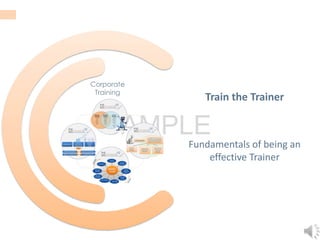The document outlines the fundamentals of effective training through a 'train the trainer' approach, focusing on psychological and teaching factors influencing learning. It includes course objectives, definitions of learning, various learning theories, and the principles of adult learning. The eight units cover everything from training preparation to delivery and assessment, emphasizing the importance of understanding how individuals learn and apply knowledge.
















































































































































































































































